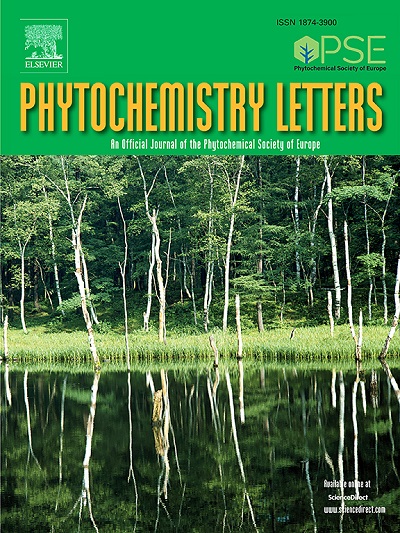Antioxidant and antagonistic activities of withaferin A-producing endophytes from Withania somnifera and Withania coagulans
IF 1.4
4区 生物学
Q4 CHEMISTRY, MEDICINAL
引用次数: 0
Abstract
Microorganisms are increasingly studied in biotechnology for their potential in pharmaceutical compound production. Endophytes, microorganisms living within plants, can produce specialized metabolites similar to those of their host plants. This study focused on isolating and identifying withaferin A (WFA)-producing endophytes (WFAPEs) from various organs of Withania somnifera and W. coagulans using morphological characteristics and ITS1–5.8S-ITS2 sequencing. In total, 10 fungal endophytes (FEs) and four bacterial endophytes (BEs) were isolated from W. somnifera, and 11 FEs and two BEs from W. coagulans and WFA production was evaluated using HPLC-PDA-MS. The antioxidant activity of WFAPEs was assessed with the DPPH assay, while the antagonistic effects of BEs against FEs were examined through co-culture. Phytochemical analyses revealed that three FEs, including Aspergillus lentulus and Chaetomium sp. from W. coagulans and Ascochyta rabiei from W. somnifera, produced WFA. The highest WFA content (136.57 ± 2.00 µg g⁻¹ dry weight, DW) was produced by A. lentulus, which also exhibited the highest antioxidant activity (IC50=15.38 μg mL⁻¹). Additionally, Bacillus subtilis SWSB1 showed antagonistic effects (4.96 ± 0.1 mm) against Chaetomium sp. Aspergillus lentulus isolated from W. coagulans appears to be a promising natural source for the commercial production of the anticancer compound WFA in fermentation systems.
产withaferin a内生菌的抗氧化和拮抗活性研究
微生物因其在药物化合物生产中的潜力而在生物技术领域受到越来越多的研究。内生菌,即生活在植物内部的微生物,可以产生与寄主植物相似的特殊代谢物。本研究利用形态特征和ITS1-5.8S-ITS2测序技术,从Withania somnifera和W. coagulans的不同器官中分离鉴定产withaferin A (WFA)内生菌。利用HPLC-PDA-MS技术,分离得到10种真菌内生菌(FEs)和4种细菌内生菌(BEs),并对11种FEs和2种BEs进行了鉴定。DPPH法检测wfape的抗氧化活性,共培养法检测BEs对FEs的拮抗作用。植物化学分析表明,三种FEs产生WFA,包括凝结水蛭中的香曲霉和毛藻,以及黑水蛭中的Ascochyta rabiei。香菇的WFA含量最高(136.57 ± 2.00 µg g⁻¹干重,DW),也具有最高的抗氧化活性(IC50=15.38 μg mL⁻¹)。此外,枯草芽孢杆菌SWSB1对毛藻具有拮抗作用(4.96 ± 0.1 mm)。从凝固芽孢杆菌中分离的香菇曲霉似乎是在发酵系统中商业化生产抗肿瘤化合物WFA的一个有前途的天然来源。
本文章由计算机程序翻译,如有差异,请以英文原文为准。
求助全文
约1分钟内获得全文
求助全文
来源期刊

Phytochemistry Letters
生物-生化与分子生物学
CiteScore
3.00
自引率
11.80%
发文量
190
审稿时长
34 days
期刊介绍:
Phytochemistry Letters invites rapid communications on all aspects of natural product research including:
• Structural elucidation of natural products
• Analytical evaluation of herbal medicines
• Clinical efficacy, safety and pharmacovigilance of herbal medicines
• Natural product biosynthesis
• Natural product synthesis and chemical modification
• Natural product metabolism
• Chemical ecology
• Biotechnology
• Bioassay-guided isolation
• Pharmacognosy
• Pharmacology of natural products
• Metabolomics
• Ethnobotany and traditional usage
• Genetics of natural products
Manuscripts that detail the isolation of just one new compound are not substantial enough to be sent out of review and are out of scope. Furthermore, where pharmacology has been performed on one new compound to increase the amount of novel data, the pharmacology must be substantial and/or related to the medicinal use of the producing organism.
 求助内容:
求助内容: 应助结果提醒方式:
应助结果提醒方式:


